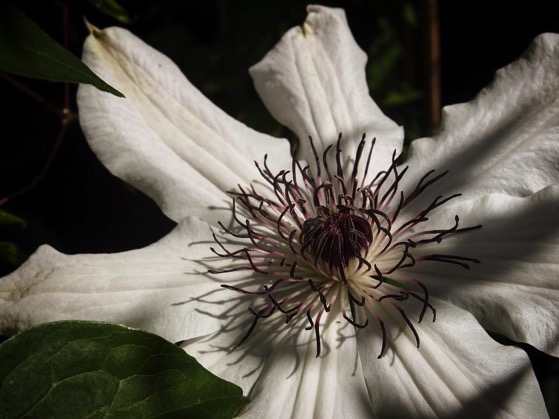
Without support, it will sprawl along the ground as a dense, tangled ground cover (to 6-12″ tall and 10′ wide) which typically chokes out most weeds. If given support, it will climb rapidly with the aid of tendrilous leaf petioles to 20-25′ in length. It is a vigorous, deciduous, twining vine with an extremely rampant growth habit. Noteworthy CharacteristicsĬlematis terniflora, commonly called ‘Sweet Autumn’ Clematis is a fragrant fall-bloomer. This clematis can be quite aggressive and will self-seed readily. Prune hard in fall after flowering or in early spring. Unlike almost all other species of clematis, this plant will thrive and bloom well in considerable shade.
#WHITE AUTUMN CLEMATIS FULL#
If left unpruned, Clematis can turn into a mass of tangled stems with a bare base and flowers well above eye level.Clematis ‘Sweet Autumn’ grows easily in average, medium, well-drained soil in full sun to part shade. Regular pruning of Clematis is important as it promotes strong growth and flowering as well as a harmonious plant. They are divided into 3 groups which determine how they should be pruned. They create year after year a ravishing colorful show in the garden whether solely trained on walls, arbors, or trellises, or grown in association with other climbers. It is no wonder they are so popular! From tree huggers to container varieties, there is a Clematis for every garden and flowers for almost every month of the year! Members of the Ranunculaceae family, they include more than 300 species and hundreds of hybrids.
#WHITE AUTUMN CLEMATIS SKIN#
Severe pain in the mouth if eaten, skin irritation if touched or inhaled.

In very dry, hot areas, provide afternoon shade and mulch to keep the roots cool. Ideally, Clematis prefer having their 'heads in the sun and their feet in the shade'. Thrives in deep, moist, well-drained soils, in full sun or part shade.Western clematis is long-lived and spreads primarily via seed in the wild, but also via vegetative means (layering). They also chewed the plant to remedy colds and sore throats. Native Americans used the root as a horse stimulant.

The flowers are pollinated by bees and other insects. Small birds and rodents use the canopy for cover. Western White Clematis attracts birds, hummingbirds, and butterflies. It also provides excellent stabilization of streambanks and is useful for erosion control and hillside plantings. Widely adaptable, tough, drought tolerant, and disease-resistant, Western White Clematis can be trained on a trellis or allowed to climb a tree. Even after flowering is over, this vine remains attractive, thanks to the plume-like seedheads left by the passing female flowers, therefore providing winter interest.

The blossoms are so profuse that they almost cover the foliage of pinnately compound leaves adorned with 5-7 leaflets. wide (2.5 cm), from mid-spring to late summer (depending on geographic location).

Clematis ligusticifolia (Western White Clematis) is a robust, woody or semi-woody, deciduous climber with showy clusters of fragrant, creamy-white flowers, 1 in.


 0 kommentar(er)
0 kommentar(er)
